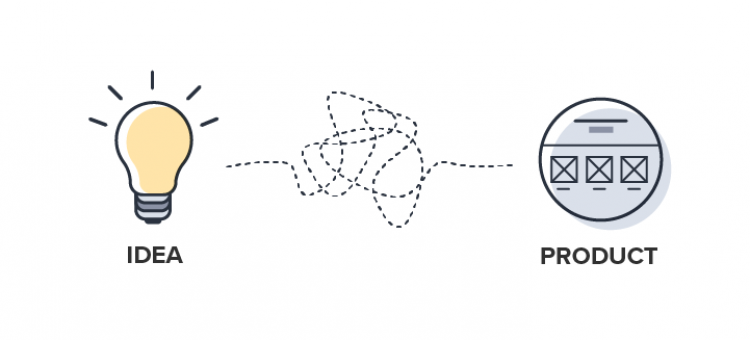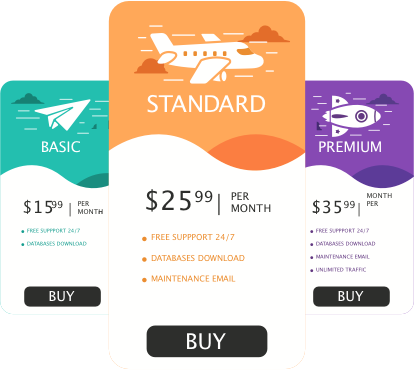Startup Idea Validation with UX Research

Startup idea validation is a hot topic. People want to know if there’s a secret formula. This blog will describe a systematic process to validating ideas and concepts.
Proposed ‘Startup Idea Validation’ Process
- You have an idea
- Identify your target demographic, which is the group that will benefit from your solution (i.e. Sales Managers at Large Companies or Women living in cities with income over $150k)
- Recruit your target demographic and schedule a one-on-one research session
- Conduct your research session and determine if your solution = customers ideal solution
- If yes, start prototyping!
- If no, alter your idea and head back to #3
Who Is My Target Demographic?
When validating ideas, first answer the question “who is my target demographic?” In reality, they are the people who are experiencing the problem you’re trying to solve. If you aren’t sure who your target audience is, perform a search on Google, write in Reddit threads, Slack groups, and head to a Meetup. Cast a wide net and see with who your idea or product resonates.
Once you’ve identified your target audience, speak to them about their motivations, frustrations, and pain points. During that session, don’t lead with your solution as it will bias responses.
Use this template to guide your conversation:
Problem Questions
- How do you currently solve <State Problem>?
- What are the challenges with your approach to solving this problem?
- How frequently do you have this problem?
- How important is it to find a solution to this problem?
- If someone were to solve this problem, how would that improve your life?
- How willing are you to pay for a solution to this problem?
- What price point would you expect for a solution to this problem?
- If you were to design an ideal solution to this problem, even if it’s out there, please describe what that solution would look like.
Solution Questions
- <Describe your company’s solution>. What are your initial thoughts on this solution?
- Does the proposed solution solve your pain points and frustrations?
- What questions do you have about this solution?
- How much would you pay, if any, for this solution?
- How frequently, if at all, would you use this solution?
- How would you improve this solution?
If the problem you’re looking to solve matches the problem they’re experiencing; it’s a pretty solid idea.
Starting a business is challenging. Doubt will creeps in, and you’ll think “Is this really a good idea?” and “Will anyone actually buy this?” Rest assured you can feel confident that you’ve gone through a startup idea validation process with your target audience.
Product pricing can also be the result of an insightful conversation with your target audience. Ensuring that the price of your solution matches the perceived value is extremely important.

Use these questions to frame your conversation.
Overview Questions
- Context: <Description of what the company sells>
- Scroll up and down the page. What are your initial thoughts on this page?
- What do you think of the pricing page layout?
- Are the pricing options clear?
Pricing Tier 1
- Now let’s take a look at <Tier Pricing Name>. In your own words, what value are you getting from this tier?
- Which features in this tier are most important to you?
- Which features in this tier are least important to you?
- Do you feel that the price is accurate? If not, how much would you expect to pay?
Pricing Tier 2
- Now let’s take a look at <Tier Pricing Name>. In your own words, what value are you getting from this tier?
- Which features in this tier are the most important to you?
- Which features in this tier are the least important to you?
- Do you feel that the price is accurate? If not, how much would you expect to pay?
- <If needed, repeat with more tiers>
Overall Questions
- Do you need more information to make a purchasing decision?
- If you were to make a purchase, what plan would you select?
- Let’s say you’re ready to purchase. What would you do next?
After all, your target users are the ones who will end up paying for or using your solution. They should be the ones to tell you what they think about your idea. It’s helpful to ask them open-ended questions about their problems, frustrations, motivations, and pain points. If you truly understand the issues your customers face, the solution will come quickly.
Problem-Oriented Startup Idea Validation

Unfortunately, people fall in love with the solution they are building and forget about the problems that their users are facing. It’s essential to be problem-focused. Try having these “problem-focused conversations” with your audience. It will ensure that the problem stays fresh in your mind.
Performing user experience research doesn’t need to break the bank. Research shows that conducting a study with 5 participants is all you need to get a solid consensus of opinions.
Direct video-based feedback from your target demographic used to be challenging, which is why we built PlaybookUX. We are a software that recruits your target demographic, conducts video-based research sessions, and uses A.I. to synthesize the results. Our tool will help you understand if the idea is worth pursuing. We make the process painless.
Interviews vs Unmoderated User Research
Speaking with your target demographic is the first step towards validating ideas and concepts. There are two ways to speak with your target audience
- Moderated interviews is when you speak to participants directly via video conference.
- Unmoderated research is when you write questions about your idea or concept for participants to verbally respond to while recording their voice and screen. Participants can also interact with materials, such as a website or prototype.
The Benefits of Great UX

When a product or service has great UX, it has increased customer satisfaction, customer adoption and conversation rates. It also has decreased support costs, bounce rates and churn. Products with great UX allow customers to find what they’re looking for. When customers can achieve their goal, it limits the number of times a support team is contacted. It makes it easy for customers to perform their desired action (i.e. signing up, finding a pair of jeans, and checking out) with as few clicks as possible.
All of these things result in a better bottom line for the business.
- Each dollar invested in UX yields $10 to $100 in return.
- If you’re looking to save money, UX could be your answer. “Fixing a user experience error after development is up to 100x more expensive than it would be before.” Conduct research ahead of development to avoid redesigning and putting money towards UX band-aids.
- Think your website doesn’t have the best navigation? Then say goodbye to a chunk of potential customers. “61% of users move to another site if they aren’t able to find what they’re looking for right away.”
- “By 2020, customer experience will overtake price and product as the most important brand differentiator.”
- When users find your website’s UX pleasing them the most, they’ll keep coming back.
- Companies with “highly effective UX have increased their revenue by 37%, and top 10 UX leaders in America outperform the S&P with close to triple the returns.”
If you like conducting user research but are short on time, we offer a $600 package, where we conduct unmoderated sessions with 5 participants. We deliver a presentation, video highlight reel, and consultation. All we need from you is your objective and testing assets! Get in touch about this plan and any other questions here.

Speak to high quality people


